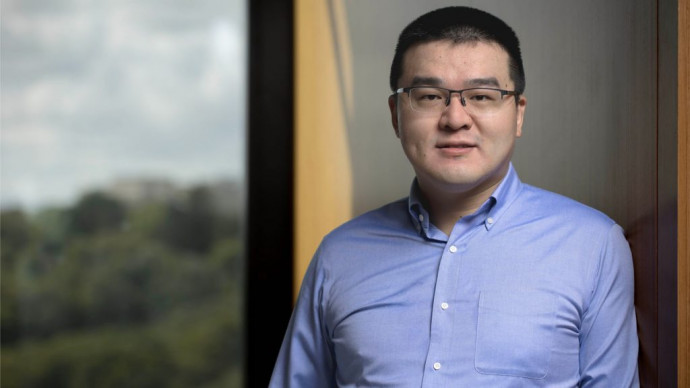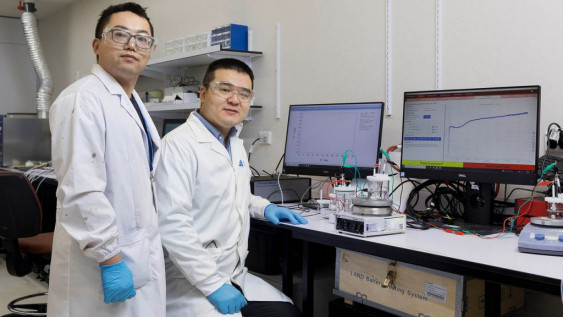Research
Published 14 February 2024Greenhouse gas transformed in aid of carbon-free future

Waste carbon dioxide was repurposed in benchtop experiments at the University of Auckland.
This story was first published here.
Cutting-edge University of Auckland research into converting waste carbon dioxide into a potential precursor for chemicals and carbon-free fuel has featured in the leading science journal Nature.
Dr Ziyun Wang’s researchers in the School of Chemical Sciences, in collaboration with researchers at Chinese institutions, combined computational chemistry with electrochemical experiments to demonstrate a method for turning CO2 into formic acid.
In benchtop experiments, a catalyst made from waste lead-acid batteries enabled a transformation which hadn’t been possible using previous catalysts.
Formic acid – the same substance produced by ants (formica is the Latin word for ant) – is a colourless and pungent liquid with potential as a transportation fuel, for storing electrical energy and for enabling the petrochemical industry to cut CO2 emissions.
As emissions of carbon dioxide, the primary greenhouse gas, contribute to global warming, scientists are looking into options for the capture and storage of CO2, for repurposing CO2, and for pursuing a carbon-free economy.
Wang’s group is one of the world leaders in research into CO2 electrochemical reduction (CO2RR) using acidic rather than alkaline conditions.
“This innovation opens up exciting possibilities for carbon-neutral technologies,” he says. “In the future, cars and gas stations could be using repurposed carbon dioxide.”
In tests, the new method efficiently converted CO2 for more than 5,000 hours, and the researchers’ calculations suggest it can be cost-effectively scaled up for industry.

PhD student Ruihu Lu (left) and Ziyung Wang.
“The biggest challenge now is finding the financial support to further explore our technology's possibilities,” says Wang.
The experiments used a proton exchange membrane electrolyser. Carbon dioxide flowed into an electrochemical cell and was converted into formic acid, just like charging a battery. Two PhD students, Chengyi Zhang and Ruihu Lu, and a research fellow, Dr Yu Mao, worked on the project.
Additional information: Link to the original article
Additional information: Link to the paper in Nature
RESEARCHER
Dr Ziyun Wang
ORGANISATION
University of Auckland
FUNDING SUPPORT
Marsden Fund
CONTRACT OR PROJECT ID
UOA2126
